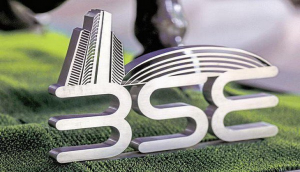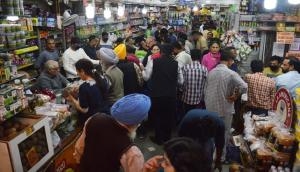
India's jewellery demand in January to March (Q1) fell by 41 per cent to an 11-year low of 73.9 tonnes as COVID-19 compounded the impact of higher domestic gold prices amid a depreciating currency and softer economic growth, the World Gold Council said in its latest demand trends report released on Thursday.
Although the wedding season lifted demand early in the quarter, a sharp increase in local gold prices from mid-February led to a slowdown in demand as consumers held back on purchases.
Later in the quarter, the market suffered as the lockdown took effect: demand in March slumped by between 60 to 80 per cent. The Q1 average price of Rs 41,124 per 10 gramme in Q1 was 26.6 per cent higher year-on-year.
The local gold price continued its upward trajectory in Q1 20 and breached previous historical highs. A weaker rupee, combined with a rising dollar gold price, resulted in the local gold price closing at an all-time high of Rs 44,315 per 10 gramme in March.
Concerns around economic growth impacted demand. India's GDP growth has been on a downward trajectory since Q1 2019 and green shoots of recovery were sparse in Q1. Against such a backdrop, consumer spending on non-essential items declined.
This was accentuated by the outbreak of COVID-19 in March. Middle-class urban consumers and rural consumers became more cautious in opening their wallets to purchase gold, and footfall to jewellery stores slowed early in March.
This was followed by a gradual closing of retail stores mid-month before the full lockdown was imposed in the final week of the quarter.
According to a Reserve Bank of India (RBI) survey conducted across 13 cities between February 27 and March 7, although consumer confidence increased slightly in the first two months of the quarter, sentiment on the general economic situation, employment scenario and household income remained pessimistic.
"While Q1 demand was hard hit, we expect the impact of COVID-19 to be more severe in the second quarter as the lockdown extends into May," said the report.
This will impact gold demand during the key buying festival of Akshaya Tritiya as well as wedding-related purchases. Although some branded retailers have reported increased interest in their online platforms, logistical issues imposed by lockdown measures have made it difficult to fulfil the orders they generate.
Meanwhile, bar and coin investment in India fell 17 per cent year-on-year to 28 tonnes -- its lowest level for four years. Having fallen prey to soaring and volatile local gold prices in January and February, the lockdown imposed in March effectively brought retail investment to a halt.
Availability of bars and coins became problematic after the gradual closure of retail shops and bullion dealers from March 17 onwards and was non-existent after the complete lockdown that began on March 25.
"The discount in the local market price clearly shows the impact of the lockdown -- widening out sharply to as much as 70 dollars per ounce before ending the quarter around 40 dollars per ounce".
Interest in digital gold products -- a trend WGC noted last quarter -- continued to grow in Q1 as it was obviously easier to buy gold via such platforms.
This echoed the rise in demand for ETFs in India which saw relatively sizable inflows of 4.4 tonnes as investors rushed to meet their safe haven needs.
"This perhaps presents an opportunity that could revive Gold Monetisation Scheme in a consumer-friendly manner," said Somasundaram P R, Managing Director for World Gold Council India operations.
Consumer sentiment could receive a boost with the arrival of a normal monsoon as predicted. Issues of the integrity of gold and right price will receive greater consumer attention as gold prices test affordability, he said.
"A digital transformation of the industry could be a positive outcome of the current crisis as social distancing, contactless payments and other behavioural necessities challenge earlier forms of consumer engagement," said Somasundaram.
-ANI
Also Read: Equity gauges gain on global cues, Tata Motors jumps 11%







![BJP's Kapil Mishra recreates Shankar Mahadevan’s ‘Breathless’ song to highlight Delhi pollution [WATCH] BJP's Kapil Mishra recreates Shankar Mahadevan’s ‘Breathless’ song to highlight Delhi pollution [WATCH]](https://images.catchnews.com/upload/2022/11/03/kapil-mishra_240884_300x172.png)

![Anupam Kher shares pictures of his toned body on 67th birthday [MUST SEE] Anupam Kher shares pictures of his toned body on 67th birthday [MUST SEE]](https://images.catchnews.com/upload/2022/03/07/Anupam_kher_231145_300x172.jpg)






